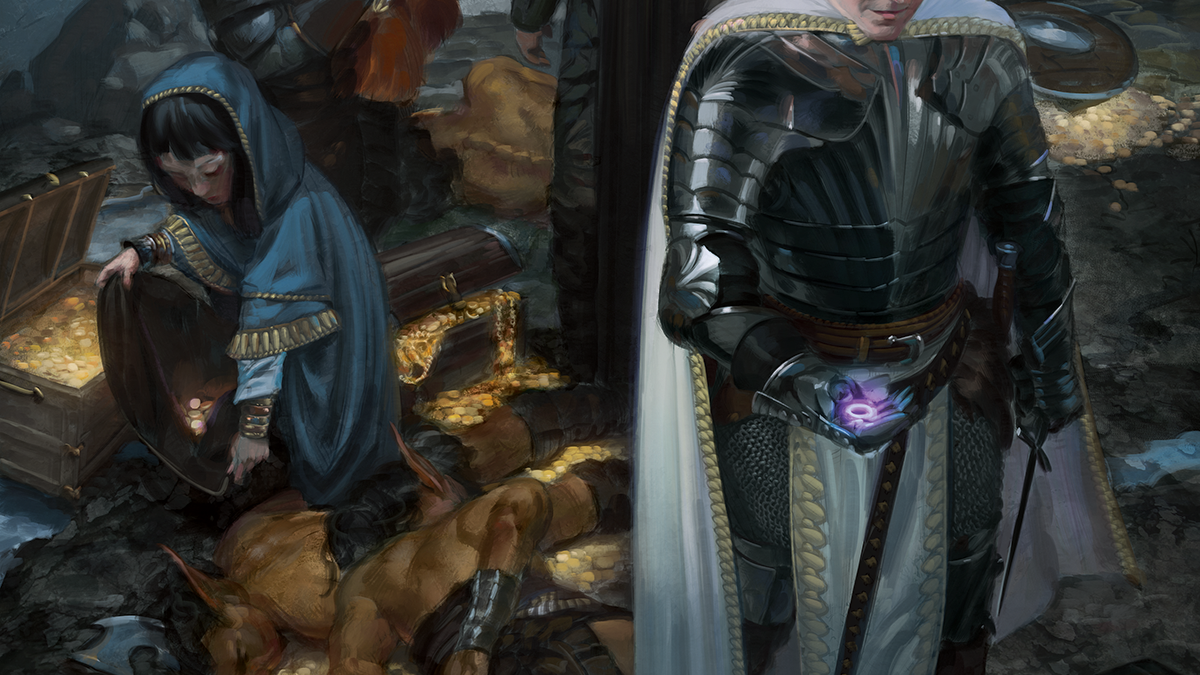Magic is a centralizing force in Dungeons & Dragons 5E thanks to how strong even a single spell can be. But how many spells can you land in a turn? Is it possible to completely turn the tides of battle if you’re willing to spend the resources?
Spellcasting is a fairly common mechanic across 5E’s classes, and is even available to a handful of different races. By spending spell slots, casters like Bards or Sorcerers can cast spells that they’ve learned or prepared from their spell list. As spellcasters level up, they gain additional spell slots and access to higher-level magic.
How many spell casts are possible per round in 5E?

Theoretically, you can cast as many spells as you have actions in Dungeons & Dragons 5E. The only limitations to magic are your spell slots and available actions. You also need spells that take actions instead of other resources. Keep in mind that if you cast a bonus action spell, you can’t cast other spells in the same turn—besides Cantrips.
Magic is relatively free-flowing in 5E, with the only real limit being your number of actions per turn. That said, the ability to gain additional actions in 5E isn’t exactly common, and you’ll still need to spend all the spell slots involved, even if you cast magic several times on the same turn. So, while efficient, you’ll be burning through your magic quickly if you do have multiple actions.
Bonus action spells

A major stopgap in casting multiple spells in a round is the bonus action clause. If you cast a spell that would take a spell slot as a bonus action, you can’t cast other non-Cantrip spells in a turn. This includes spells that are naturally bonus actions, like Misty Step, or spells that become bonus actions through any means, like Quickened Spell.
Importantly, you can’t cast a bonus action spell during the same turn that you cast a non-Cantrip spell through an action. The order doesn’t matter. This means you can’t Fireball and then Misty Step or Misty Step and then Fireball.
This makes bonus action spells feel a bit less enticing, but it must be emphasized that many of them are worth the cost. Thankfully, you can still perform other types of actions during the same turn. The ability to use Quickened Spell on the same turn that you interact with an object, Disengage from a foe, or even Attack with a weapon can’t be understated.
It does put certain classes in an unusual position, however. For example, a Ranger can’t cast Hunter’s Mark on the same turn they use Hail of Thorns. A Paladin can’t use a Smite spell and also cast Cure Wounds. In both of those cases, at least you have a strong Attack action. The poor Wizard who uses Misty Step can’t use Hold Person during the same turn.
The spell doesn’t need to take a spell slot to function like this. Free bonus action spells, like from Fey Touched, will still lock you out of other spells on the same turn.
This is a big departure from how Baldur’s Gate 3 presents bonus action magic. BG3 has zero restrictions like this, meaning a Rogue Three/Sorcerer Nine can Fireball up to five times in a turn. While hilarious, that is far from possible in tabletop 5E.
Cantrips as a bonus action
Cantrips are notable exceptions to the bonus action spellcasting rule. You can cast a Cantrip on the same turn that you cast a bonus action spell. You can also cast a cantrip as a bonus action, like from the Illusion Wizard‘s Improved Minor Illusion ability, and still cast a spell as an action.
Cantrips are considered spells in most cases except for this one. It’s a good thing, too, as being able to cast a cantrip during the same round that you cast a spell is basically the Warlock’s entire gimmick. Eldritch Blasting a Hexed foe is very important, and only possible with this rule caveat.
This also allows Sorcerers to deal massive damage in a turn, with turns like Quickened Spell Disintegrate plus Fire Bolt being surprisingly effective at turning an enemy into dust.
Spells from magic items

Unfortunately, magic from a scroll, wand, or magical items behave exactly like spells do normally, in terms of how they restrict further spellcasting in a round. If you cast Misty Step from a scroll, you can’t then cast another spell from a magical item or your own spell list. They are still considered to be spells for the purposes of these various restrictions.
Magical items behave similarly, unfortunately. A Cleric who uses a Necklace of Prayer Beads’ Smiting Bead to activate Branding Smite will not then be able to cast Cure Wounds. This is because the magical items are being channeled through you, and you are still the one casting the spell.
It’s safe to assume that, if you’re taking an action that casts a spell with a spell level, you’re going to be locked out of bonus action spells.
Spells from potions
Potions that replicate magic are the notable exception to the rule. If you decide to imbibe a potion, you can still cast a spell as a bonus action. Potions don’t behave exactly like spells; you’re not casting them yourself. This is unlike how other magical items function and it allows you to be more expressive with magic at the cost of a consumable.
So, for example, even though a Potion of Speed applies Haste to the drinker, the person drinking the potion can still cast Hex on a target. That’s because they’re not casting Haste, the potion is.
If you use the houserule that drinking a potion takes a bonus action, this means that you could drink a Potion of Speed, cast a spell that takes a spell slot, and still have an action to spare. This usually isn’t a big deal, but it’s worth confirming with your DM before taking a course of action like that. They may have other rulings with this houserule that are different from how the DMG and Player’s Handbook handles things.
Ways to cast more spells per round

If you have multiple actions rather than bonus actions, you can cast multiple spells in a round. There are a handful of ways to do this, the most common being through a Fighter multiclass. In addition, there are a handful of late-game methods to stop time or provide magic to others, allowing you to theoretically cast multiple spells in a turn through time shenanigans.
The Fighter’s Action Surge, available at level two, is the best way to cast two spells in a turn in 5E. Action Surge, available once per short rest, allows the character to simply take another action. No ifs, ands, or buts. You can cast a spell, activate Action Surge, and then hammer your opponents with another spell. You can’t concentrate on two spells at once, though, so be careful with the two spells that you cast using this ability.
Common uses of Action Surge for spellcasting include dumping two area-of-effect spells in the same room for massive damage, casting Hold Monster then walking up to it for critical attack roll spells, or Banishing an important monster then dealing damage to their minions.
Players who are used to Baldur’s Gate 3 might suggest Haste as an option, but Haste specifically prevents the caster from doing anything other than Attack (once, with a weapon), Dash, Disengage, Hide, or Use an Object. It does not let you cast an additional spell in a turn in tabletop D&D, which might be for the best. You can have incredibly silly turns in BG3 with Haste on a spellcaster.
The Time Stop spell is cheating a bit, but it theoretically allows you to cast up to five spells in a single turn. These spells can’t affect another target, and you roll a d4+1 to see how many turns you get to take before someone else does. That said, it is theoretically possible to get multiple spells out in this time, before anybody else can act.
Some specific class abilities might allow you to cast multiple times in a round, but through other characters. The Chronurgy Wizard, for example, can use Arcane Abeyance to make a magical object and let another creature use their action to cause the spell to occur, as if they were casting it with your spell save DC. You can take this action during the same round that the Chronurgy Wizard casts a spell. But, if the person holding the mote does so, that person can’t use a bonus action to cast a spell.






Published: Oct 29, 2023 06:45 am